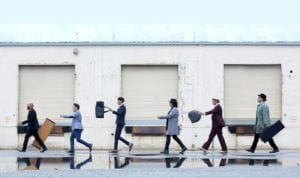Although you may not have touched a car radio since the introduction of the AUX port, it’s possible to wager that most artists heard on the radio can be placed into a pre-existing genre with ease. However, every once in a while, a band will emerge with a sound that escapes an easy label. They will challenge our preconceived notions of musical genres by blurring the lines between them. Ozomatli, a band that is famous for their mold breaking fusions of culture and genre, are one of those very bands.
While it can be said that they play primarily within the realm of Latin rock, the group has dabbled in nigh every genre you can think of, including salsa, jazz, funk, reggae, and rap. Their songs can (somehow) shift from cumbia to hip hop within seconds, their albums playing out more like a collection of different artists than one borne out of a single group. For decades, the band has been sharing their unique sense of fusion with the world. One that comes paired, appropriately enough, with a focus on activism and political progress.
A quick search will tell you they have long been involved with all manner of activist activity, from performing at protests for immigration and women’s rights, all the way to becoming cultural ambassadors for the U.S. State Department. And so, here is a band that has brought many different genres together, showing us that disparate genres can coexist with one another in the same band and even the same song. I suppose it only makes sense they would try and show us that we can all coexist with each other just as well.
In a recent interview with percussionist and original member, Jiro Yamaguchi, Concert Guide Live digs down to the historical roots of Ozomatli. For those curious about how a band like this could exist, check out our conversation below. And be sure to listen to their new album, Non-Stop: Mexico to Jamaica, a collection of Latin songs rearranged as reggae songs. It’s awesome.
And If you want to experience the magic in person, you have several chances to see them in the SoCal Area: Nov. 24 The Canyon Club, Nov. 25 The Rose, Nov. 26 The Coach House, Dec. 9 Saban Theatre, Dec. 22 and Dec. 23 The Music Box. So, don’t miss out!
CONCERT GUIDE LIVE: When did activism become a part of Ozomatli music?
JIRO YAMAGUCHI: When we were just starting out there was this labor dispute going on down at this building which was run by the Los Angeles Conservation Corps. Our bass player was involved in that group and they were fighting for health care and better wages for their job. But in doing so, they got fired from their job, but won the lease to the building. Which is when we came in. It was called the Peace and Justice center. We were just playing music to make money to keep the whole operation going. And then it became this thriving arts community for the youth. There was like skate programs and graffiti art and things like that. So that’s how we got our start. We got asked to do gigs for all different kinds of causes. Whether it was women’s issues, immigration issues, Prop 187. So, we have always been involved.
CGL: What about music makes it an appropriate medium for political discussion and activism?
JY: It’s a vehicle that brings people together. It’s a medium in which you can express ideas. I don’t think our music is overtly political, but we do represent – I think – conclusion, and trying to put different ideas together to see if they work. And they don’t always work.
CGL: Speaking of bringing different ideas together, are there certain band members that bring different genres and cultures to the table? How did your sound form?
JY: It’s funny because when we first started we didn’t have any focus necessarily on any genre, or like, “this is the style of music we’re gonna do.” It’s kinda like the group of people that got together, the people who showed up, whatever their forte’s were, that was what we made music with.
Wil (Wil-Dog Abers/bass) has expertise in reggae, and Cut Chemist is a Dj, and I had been playing tabla in a lot of North Indian classical music. Justin (Poreé /percussion) had a lot of experience with Afro Cuban music, as well as our lead singer (Asdrubel Sierra) who is well versed in Latin music of all different kinds. And so, we just threw everything into the pot and made music from it. It just naturally was that way. Everybody was open enough that they were into exploring whatever kinds of ideas.
CGL: So, it sounds like the band would never have existed if it weren’t for that cultural center.
JY: I mean, I think it’s all pretty important. In a lot of ways, it represents Los Angeles and the blending of different communities and cross pollination of different things. I think we’re pretty unique, but then again, I think there are bands around the world that also infuse different music. But I guess music has always been fusing, whether it’s rock, jazz, reggae. It all feeds and communicates.
CGL: You ventured into children’s territory several times, including the Happy Feet Two videogame soundtrack and Ozokidz. What inspired this shift towards a family oriented style of music?
JY: Well, we realized that some of our fans were getting older. We noticed that they weren’t coming to our shows in the middle of the week, and we were like, “Why is nobody here?” So, we sent that out on our Facebook and said, “Hey we’ll give you tickets, come on down, we’re here.” But then people would respond, “We can’t, it’s a weeknight, we have kids.” So, it was just a realization that “Our fans have families now, let’s make music for them.”
